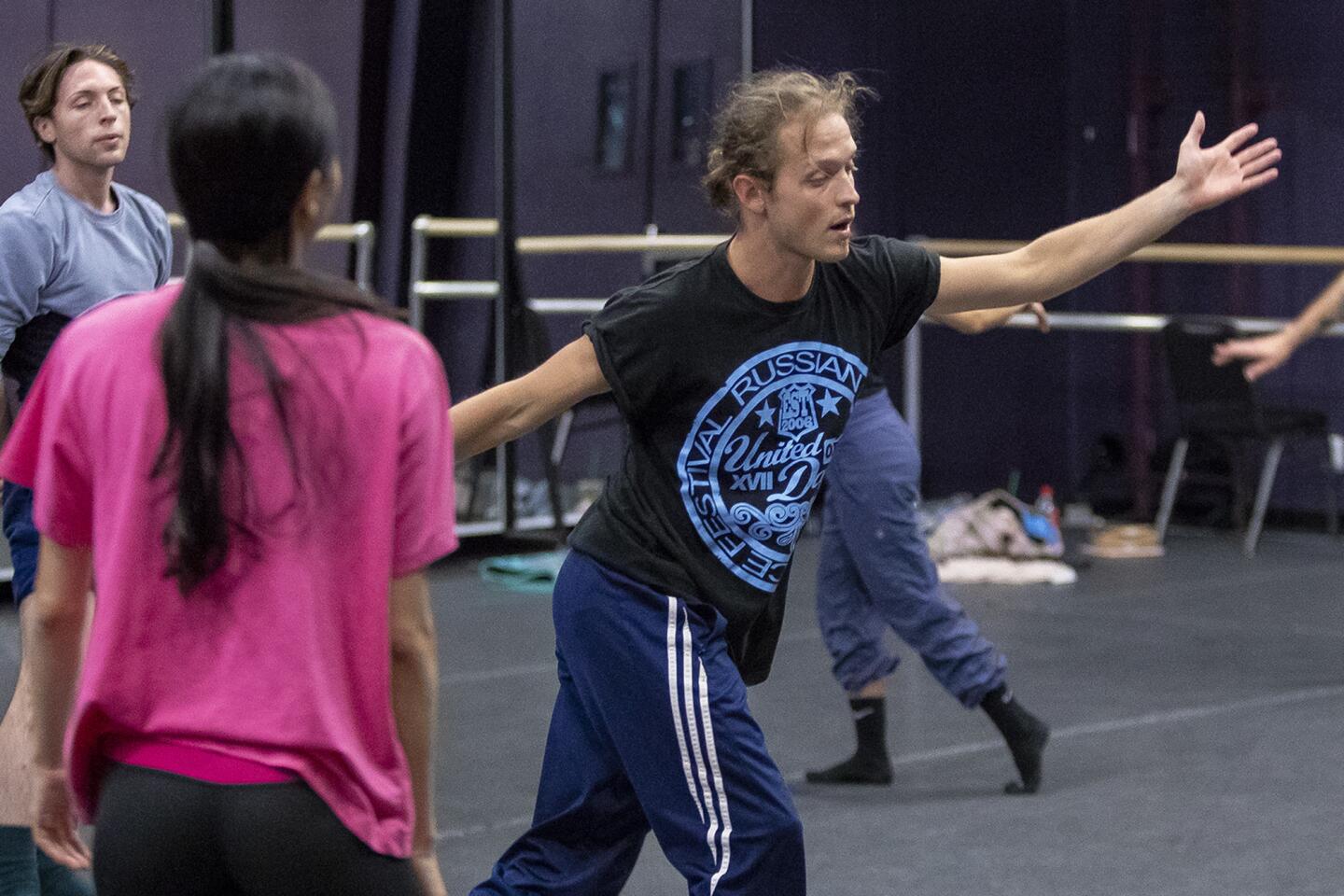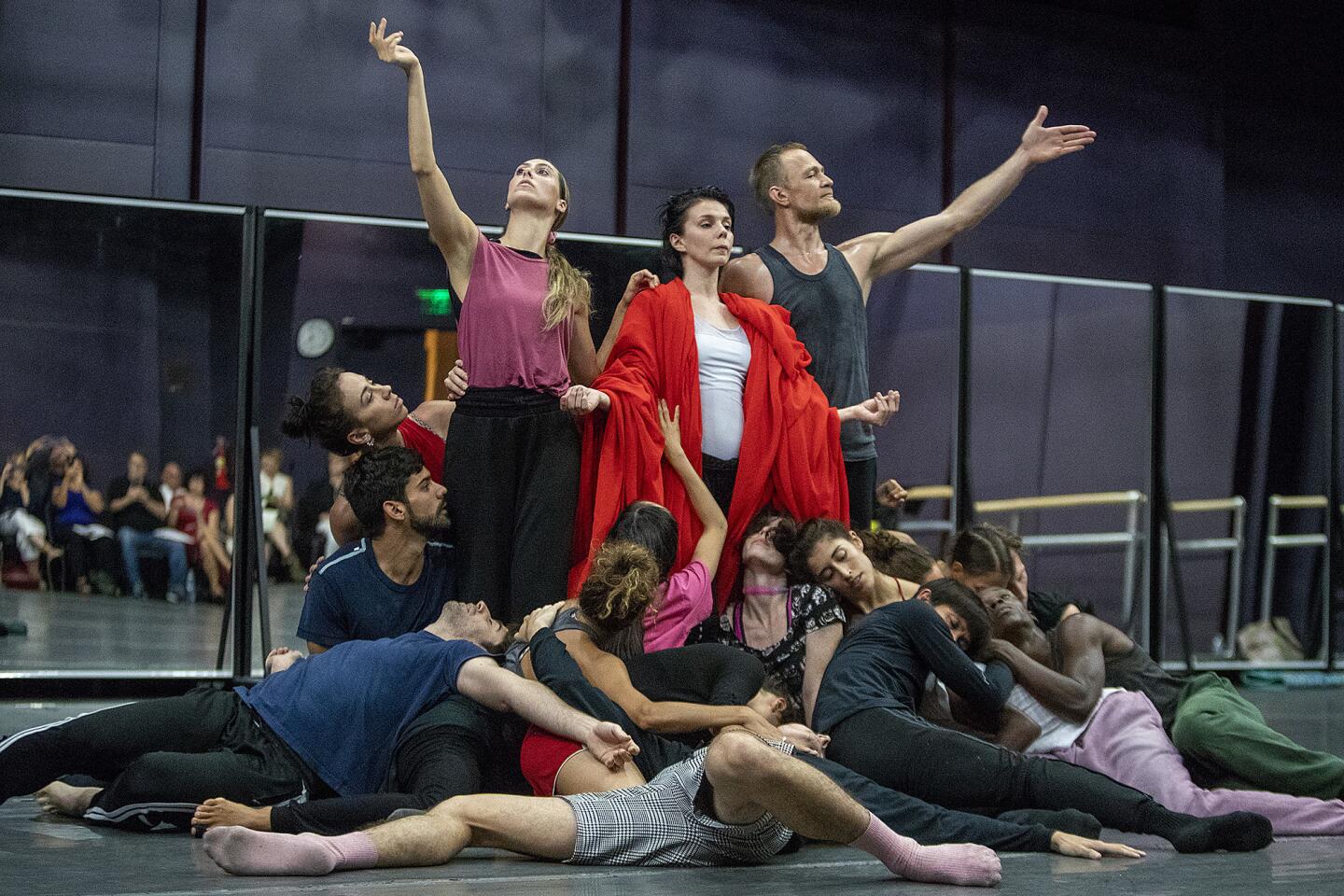Royal ballet principal portrays California dance innovator in ‘Isadora’
- Share via
Isadora Duncan, who revolutionized the world of dance with her natural, free-flowing style, will come to life at the Segerstrom Center for the Arts Aug. 10-12 in the world premiere of “Isadora,” a two-act production with famed Russian ballerina Natalia Osipova in the title role.
The role of the California native known as the mother of modern dance, whose life was filled with both acclaim and tragedy, was designed for Osipova, principal dancer of the Royal Ballet, former principal dancer with both the Bolshoi and Mikhailovsky ballets, and a guest artist with the American Ballet Theatre.
“I have long wanted to bring the fascinating story and incredible artistry of Isadora Duncan to the stage, and I am excited and grateful to be able to star in a new ballet that will bring her to life once again and honor her remarkable legacy,” Osipova said in a statement.
The dance-theater production created by Vladimir Varnava, an award-winning choreographer from Russia’s Mariinsky Theatre, includes 20 international dancers from Canada, Spain, Germany, the United States, Israel, South Korea and Russia.
To honor Duncan, the work features mostly contemporary dance, said Sergei Danilian, co-founder of Ardani Artists, which is producing “Isadora” with the Segerstrom Center.
Russian ballerina Veronika Part, in the role of The Ballerina, will be the only one dancing en pointe, in the classic ballet style, Danilian said.
In an interview after a rehearsal on Tuesday, Varnava said he and Osipova, who are working together for the first time, selected Sergei Prokofiev’s ballet “Cinderella” for the musical score. It will be performed live by the Mikhailovsky Orchestra. He spoke through a translator, Danilian.
“It remains a local story about a little girl who is dreaming,” he said of Duncan, who lived in Russia and ran a dance school there for three years. “For the second act of my production, which happens … in the Soviet Union, let’s say in the Kremlin, (it’s) a new kingdom. For Cinderella it was the visit to the prince’s palace.”
Duncan, who was born in 1877, rejected tightly choreographed ballet moves, stiff tutus and pointe shoes and championed freedom of movement to express feelings and ideas in dance. Inspired by Greek art and folk dances, she went on stage barefoot, wearing flowing tunics or togas as she danced to Beethoven, Chopin or Schubert.
When she was 21 she moved to Europe and found the adulation she had hoped to see in the United States. Then, fascinated by Bolshevism and what she considered a world of new ideas, she moved to the Soviet Union to found the dance school, which was a great success. She also married Russian poet Sergei Yesenin.
“She was always looking for something,” Varnava said. “She was hoping in Russia, where everything was coming new, to reach her goal.”
But while she was dedicated and happy in her dancing and teaching, her personal life was touched with tragedy. Her two children were killed in 1913 when the car they were in fell into the Seine River. Her marriage to Yesenin didn’t last, and he later committed suicide.
Duncan was killed in a freak accident in 1927 when a long scarf she was wearing got caught in the back wheel of a convertible car in which she was riding and strangled her.
Isadora has been the subject of ballet productions before. In 1981, choreographer Kenneth MacMillan of the Royal Ballet presented a two-act production that divided audiences. In 2009, MacMillan’s wife, Deborah, rewrote his work into a one-act ballet that also drew criticism.
“The ballet remains long and muddled,” Alastair Macaulay wrote about the 2009 version in the New York Times. “MacMillan’s heroine, a singularly unfree spirit, is a glutton for punishment. Like many MacMillan protagonists, she has a hefty streak of passive aggression. Primarily a self-dramatizing victim, she’s incidentally a hypocritical fool.”
Varnava said he considers Duncan a kindred spirit, and admires her stance as an artist and feminist who wanted to change the social and artist order in Russia — and elsewhere.
Two of his scenes performed at the rehearsal Tuesday illustrated the contrast of Duncan’s life in Russia.
In one, Russian dancer Alexey Lyubimov, portraying Duncan’s dance teacher, and others wrap a long red shawl around Osipova’s neck as they dance around her. They finally come to rest at Osipova’s side, or at her feet, embracing her.
“This is just my dream,” the choreographer said. “It will look like she walked in the night through the street and she met all these people… She was able in those people’s faces and souls to find the real movement. It’s like all people are united.
“She feels it is true. She believes.”
In another scene, Russian dancer Vladimir Dorokhin performs an athletic and grotesque dance as a drunken, womanizing Yesenin.
“She was such a great success but at the same time was such an unhappy woman.” Varnava said. “We are all human beings and we all make mistakes and we all make our choices. We all live in some kind of la la land. In the meantime, the reality is always beating us.”
Osipova has drawn acclaim for her performances in title roles in “Romeo and Juliet,” “Giselle” and “Coppelia.” She has appeared as a guest artist with companies around the world, including at Segerstrom Center. And she has received such awards as the Golden Mask, Critics’ Circle National Dance Award (Best Female Dancer, 2007, 2010 and 2014) and a Benois de la Danse Award (Best Female Dancer, 2008), Segerstrom officials said.
In 2014, she was working with British choreographer Alastair Marriott on “Connectome,” a one-act production for the Royal Ballet.
Marriott saw something in her.
“She has all the makings of a great modern ballerina, but she also has a quality of abandon and freedom that reminds me of Isadora Duncan,” Marriott told British newspaper The Independent. “She has such strength, she is so dynamic, yet she also has extraordinary delicacy and femininity. She’s a free spirit — there’s something fearless about her.”
After “Isadora’s” run at Segerstrom Center, the production will move to Moscow’s Stanislavsky Theater from Sept. 21-22, Danilian said.
Varnava said at a time with so many political games being played, he is thrilled to have an American production with an international roster of dancers go to Moscow to reintroduce Duncan’s modern dance style.
“It’s not just about the arabesque and the attitude, it’s how the body can express itself,” he said.
If You Go
What: “Isadora” world premiere
When: 7:30 p.m. Aug. 10; 2 and 7:30 p.m. Aug. 11; 1 p.m. Aug. 12.
Where: Segerstrom Hall, 600 Town Center Drive, Costa Mesa
How Much: Tickets start at $29.
Information: SCFTA.org or 714-566-2787
Susan Gill Vardon is a contributor to Times Community News.
All the latest on Orange County from Orange County.
Get our free TimesOC newsletter.
You may occasionally receive promotional content from the Daily Pilot.












